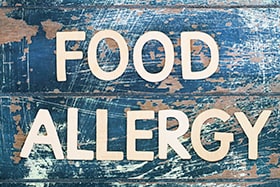Food Safety Study Findings in Plain Language
Read food safety study findings and recommendations from our Environmental Health Specialists Network. Check out our restaurant food safety studies fact sheet [PDF – 151 KB].
We seek to improve public health and industry policies and practices to reduce foodborne illness in restaurants, banquet facilities, schools, and other institutions. Our priority areas are
- Preventing restaurant workers working when ill.
- Improving handwashing behaviors and minimizing bare hand contact with food (hand hygiene).
- Requiring trained, certified kitchen managers to be present during all hours of operation.
We have included results from our studies by several categories, including the above three priorities.
Study Findings on Priority Areas of Sick Workers, Hand Hygiene, and Certification
Sick Workers
Food handling by an infected person or pathogen carrier (an ill worker) contributes to nearly half of all restaurant-related outbreaks.
Food handling by an infected person or pathogen carrier (an ill worker) contributes to nearly half of all restaurant-related outbreaks.
- Factors Linked with Food Workers Working When Sick
- Food Workers’ Reasons for Working When Sick
- Food Workers Working When They Are Sick
- Manager Practices about Workers Working When They Are Sick
NEW! You may also be interested in Can Restaurant Managers Talk with Sick Workers? 3 Things Restaurant Managers Need To Know.

Hand Hygiene
Bare hand contact by a food worker is a contributing factor in about 1 of every 3 restaurant-related outbreaks.
Bare hand contact by a food worker is a contributing factor in about 1 of every 3 restaurant-related outbreaks.
- Factors Affecting Safe Food Preparation by Food Workers and Managers
- Food Worker Handwashing and Food Preparation
- Food Worker Handwashing and Restaurant Factors
- Food Safety Practices of Restaurant Workers
Certification
CDC and FDA research support that certified kitchen managers increase food safety. Restaurants with certified managers were less likely to be linked with outbreaks, were more likely to comply with FDA Food Code regulations, and had better food safety practices.
CDC and FDA research support that certified kitchen managers increase food safety. Restaurants with certified managers were less likely to be linked with outbreaks, were more likely to comply with FDA Food Code regulations, and had better food safety practices.
- Food Safety Differences Between Restaurants Linked and Not Linked to Outbreaks
- Kitchen Manager Certification Study and Food Safety
- Food Safety Certification and Knowledge
- Restaurant Traits Linked with Safer Ground Beef Preparation and Cooking Practices

Other Food Handling Practices Associated with Foodborne Illness
- How Restaurants Address Food Allergies
- Food Allergies: Knowledge and Attitudes of Restaurant Managers and Staff
- Factors Affecting Safe Food Preparation by Food Workers and Managers
- Food Safety Practices of Restaurant Workers
- NEW! How Retail Delis Refrigerate Food

Foods Associated with Foodborne Illness
- Beef Grinding Records Kept by Retail Stores
- Restaurant Ground Beef Handling and Cooking
- Restaurant Traits Linked with Safer Ground Beef Preparation and Cooking Practices

Restaurant Meals and Illness
Retail Food Safety Programs
What Is Plain Language?
Use of plain language is one way to make sure that information, products, and services are accessible and understandable to their intended audiences.
Approximately one-half of the adult population may lack the needed literacy skills to use the U.S. healthcare system. Low literacy has been linked to poor health outcomes such as higher rates of hospitalization and less frequent use of preventive services. Health literacy is the capacity to obtain, process and understand basic health information and services needed to make appropriate health decisions.
For more information about plain language and health literacy at CDC, visit the CDC Health Literacy Web site.






















.png)











No hay comentarios:
Publicar un comentario